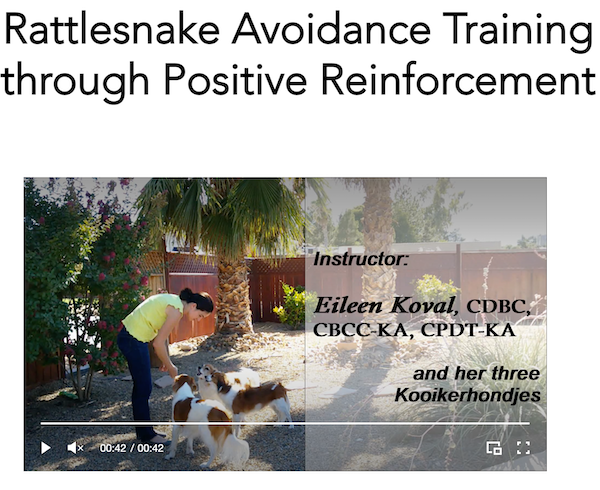 Dogs and snakes don't mix!
Dogs and snakes don't mix!
Dog owners living in areas that are also home to venomous snakes and reptiles know how dangerous it can be to encounter one of these animals on a trail hike, or perhaps even in a suburban backyard.
A dog’s natural curiosity can quickly get them into trouble unless they have previously learned to stay out of harm’s way!
Even if you live in a relatively snake-free area, they should — along with other dangerous animals — be kept in mind, especially when traveling with your dog to a place where snakes are common.
Not sure what snakes live where?
Here's a cool interactive map that shows which venomous snakes are native to each of the 50 States (well, 46 technically, as there aren't any venomous snakes native to Maine, Rhode Island, Alaska, or Hawaii, apparently!). Check it out and see if snakes are a problem where you live or travel to.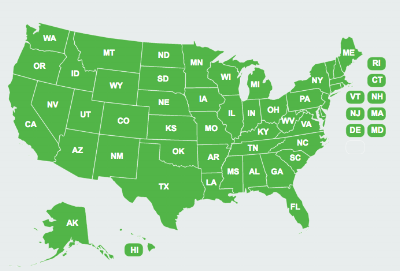
Teaching dogs to avoid snakes: The problem with punishment techniques
Because of the life-threatening nature that snake encounters pose, it’s tempting for owners and trainers to take extreme measures to protect their dogs: unfortunately, this often takes the form of intense, punitive tools like the remote-activated shock collar, which creates conditioned aversion (approaching snake = pain/discomfort) in hopes that the negative association will cause the dog to avoid snakes entirely.
The shock collar technique can work to teach dogs to avoid snakes, especially if used with:
- Appropriate timing,
- Absolute consistency and intensity, and
- Experienced owners (preferably those with a comprehensive understanding of how dogs learn and respond to various training methods) are at the helm.
That said, the use of confusingly named “positive punishment” — meaning the application of an aversive stimulus (in this case, pain) leading to a reduction in the probability of a specific behavior occurring in the future — is also commonly associated with “punishment fallout,” which can cause or magnify pre-existing fear, anxiety, and aggression problems.
It is absolutely possible to create severe behavior problems in the process of well-intentioned training, and it is impossible for even the most skilled trainers to avoid these punishment complications entirely.
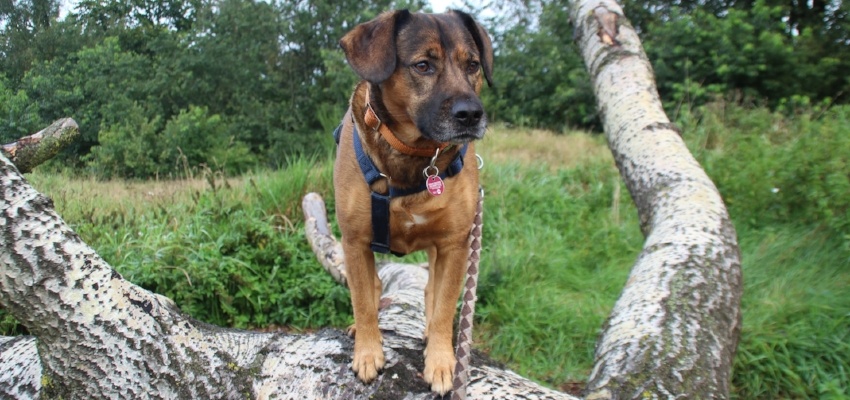
Ideal training techniques for snake avoidance
The good news is that there are other ways to train dogs to avoid dangerous animals, including techniques that rely primarily on positive reinforcement and rewards to strengthen safe behavior patterns. Keep in mind that dog training is never a “one size fits all” formula; it may be necessary to try multiple techniques or use several in combination to get the desired results.
I’ve listed some of the most common positive reinforcement training techniques for snake avoidance below. Again, however, it’s important to remember that techniques like these are often implemented in combination with clicker training, shaping exercises, or other training methods, depending on the temperament of the dog and the skill level of the handler or trainer.
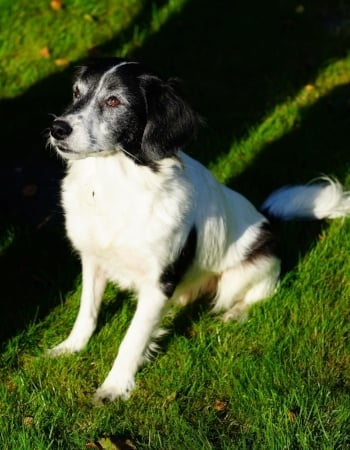 LEAVE IT: One place to start is to train a strong foundation skill, such as “leave it.”
LEAVE IT: One place to start is to train a strong foundation skill, such as “leave it.”
Once a dog learns this command in controlled training situations and can turn their attention away from distractions such as toys, food dropped on the ground, or attractive smells on walks, the cue can be practiced in progressively more challenging situations — even close but safe encounters with snakes and other dangerous animals.
Of course, using this command in real-life situations requires that the owner or handler be aware of the danger before it is noticed by the dog, or at least be close enough to intervene when the danger is encountered.
This may work best for closely supervised outings, or when walking a dog on a leash that keeps the dog within 4–6 feet at all times. [See how to teach "leave it" in 5 easy steps]
AUTO-WATCH: A similar technique can be used to establish an “auto-watch” (immediate attention to the handler when the stimulus is encountered) or another behavior that is incompatible with moving forward or making contact with a snake or reptile.
These techniques focus on exposing the dog to the danger at progressively more challenging levels as the dog is able to perform correctly. This sets the dog up for success during the majority of training trials and strengthens the desired behaviors in the process.
MAKE THE RIGHT CHOICE: Another option is to practice a technique that teaches the dog to make the right choice. In this case, the dog needs to learn to walk away or avoid an encounter with a dangerous animal, even without a verbal cue or prompt from the handler. It’s important to first practice this technique with the dog on a leash so he can be prevented from rushing forward or making contact, but the leash can generally be phased out with additional practice.
The handler and dog should approach the stimulus (always maintaining a safe distance during training!) at a distance where the dog first becomes aware of the danger. The handler stops forward movement and stands still without prompting, tugging on the leash, or trying to distract the dog. When the dog voluntarily disengages from the object or animal, the handler immediately provides high-value reinforcement for that behavior — this reinforcement could be a game of tug, an opportunity to chase a ball, or perhaps a food treat if that is the preferred reward for the dog in training.
With additional practice, the dog learns that the fastest and most reliable way to earn the anticipated reward is to disengage rather than moving forward, and the intensity of the training sessions can be increased (moving closer, less proactive leash control, etc.) until they resemble the real-life situations that the dog is likely to encounter. The vast majority of qualified, knowledgeable trainers and behaviorists avoid the use of punishment devices whenever possible and are more likely to rely on proactive management and training techniques such as those mentioned above. In rare circumstances, it may be appropriate to use a more aversive technique for teaching a dog to avoid snakes and other dangers.
The vast majority of qualified, knowledgeable trainers and behaviorists avoid the use of punishment devices whenever possible and are more likely to rely on proactive management and training techniques such as those mentioned above. In rare circumstances, it may be appropriate to use a more aversive technique for teaching a dog to avoid snakes and other dangers.
Rather than using a shock collar to punish the dog for approaching the snake, the same remote-controlled technology can be used at lower levels (annoyance rather than overt pain) and in controlled situations to teach the dog that it has the ability to remove the annoyance provided by the collar/remote by disengaging from the dangerous animal or avoiding it completely.
Using a technique such as this, which relies on negative reinforcement rather than more punitive measures, still carries a risk of side effects even though the level of discomfort is likely to be significantly lower for the dog in training.
Keep in mind that punishment or the use of shock should never be the default method used for training, especially if other foundation behaviors haven’t been established through prior foundation training.
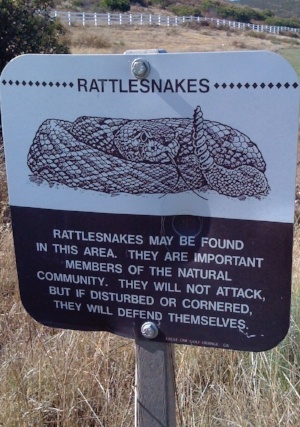
Training Resources
Do you live in an area where venomous snakes pose a risk to your dog? Remember, when it comes to the safety of your pets, you don’t have to go it alone. And getting professional assistance with this type of avoidance training is likely to be safer for you, as well.
If you’re in need of assistance with your dog or need help using these guidelines, contact a professional behaviorist or trainer in your area. Resources (links) to help you find them are listed below:
MY EXPERIENCE WITH VIRTUAL SNAKE AVOIDANCE TRAINING by Cathy Madson, CBCC-KA, CPDT-KA
Finding snake avoidance training can be tough! And trying to find a training course that doesn't rely on aversives like shock collars is even harder.
I was excited to learn about a great virtual option from Eileen Koval of Confident Canines. While I don't live in snake country (where I am, garter snakes are about all we've got), I wanted to learn the best techniques for snake avoidance in case I ever received this request from my own training clients. Eileen lives in Nevada and offers a virtual snake avoidance course for anyone, anywhere in the world.
I worked through this course and was happy to see a comprehensive curriculum and easy-to-follow instructional videos. Not only does Eileen teach the why behind the training, but she also makes sure you know what materials you'll need and gives you tips on how to find them. Who knew that you could find snake sheds for purchase to use for training exercises!
You'll learn how to train your dog to automatically avoid snakes based on smell, sight, and sound – whether or not you're close by. I also loved how the course covers intelligent disobedience, where a dog learns to ignore cues they get from us to move forward if there is a snake. This is so important, as we humans will often not be able to smell a snake and could inadvertently send our dogs into danger.
This course uses only positive reinforcement techniques and focuses on building reliable obedience skills and a strong relationship between handler and dog. I can't recommend it enough for anyone looking to train their dog to avoid snakes!
Overall Rating: 5 out of 5 stars ⭐⭐⭐⭐⭐
Sign Up for Eileen's Snake Avoidance Course Here
Note: We were not compensated or influenced in any way to produce this review.


